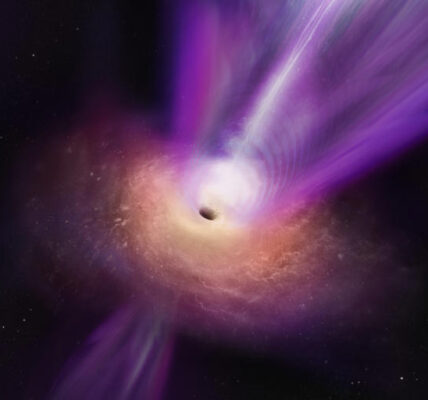Self-Interacting Dark Matter: 5 Groundbreaking Discoveries!
Self-interacting dark matter might explain the unique properties of the Crater II galaxy, offering new insights into the elusive substance that makes up over 80% of the universe’s mass.
Self-interacting dark matter (SIDM) could be the key to understanding the Crater II galaxy and the broader mysteries of dark matter. Discovered in 2016, Crater II challenges conventional models with its faint but large structure. Unlike cold dark matter, self-interacting dark matter suggests that particles interact through unknown forces, providing a better explanation for Crater II’s properties.
Self-interacting dark matter explains the absence of a central cusp in Crater II, a prediction that CDM fails to match. By studying Crater II and potentially other similar galaxies, researchers aim to gather more evidence supporting the SIDM model. This research could revolutionize our understanding of dark matter and its role in the universe.
Self-interacting dark matter is not just a theoretical concept but a plausible explanation for the behavior of galaxies like Crater II. Continued research and observations will help confirm whether this model holds the key to unlocking the mysteries of dark matter.

© ESA/Gaia/DPAC
Table of Contents
ToggleSelf-Interacting Dark Matter: A New Clue from the Crater II Galaxy
Self-interacting dark matter (SIDM) might be the key to unlocking one of the biggest mysteries in cosmology. Recently, a small galaxy named Crater II, located about 380,000 light-years from Earth, has given scientists fresh insights into this elusive substance. Dark matter, which makes up over 80% of the universe’s mass, remains invisible and undetectable directly, but its gravitational effects are evident in the way galaxies hold together. The discovery and analysis of Crater II might help us understand how dark matter behaves and interacts.
What is Self-Interacting Dark Matter?
Self-interacting dark matter is a theoretical type of dark matter. Unlike the traditional cold dark matter (CDM) model, where particles don’t interact except through gravity, SIDM particles can interact with each other through unknown forces. This idea has gained traction as an alternative to explain certain galactic behaviors that CDM cannot.
The Crater II Galaxy
Crater II is the fourth-largest satellite galaxy of the Milky Way, discovered in 2016 using images from the Very Large Telescope in Chile. Despite its size, Crater II is faint and difficult to detect, with its few billion old stars spread across 6,500 light-years. If we could see it with the naked eye, it would appear twice as large as the full moon. However, it’s nearly 100,000 times dimmer than our galaxy.
The Mystery of Crater II
The formation and maintenance of Crater II’s large size have puzzled astronomers. Our Milky Way exerts a tidal force on Crater II, stretching and influencing its dark matter halo and stars. Normally, these tidal interactions would strip away stars and dark matter, reducing the galaxy’s mass and size over time. However, Crater II’s observed properties suggest otherwise, challenging the conventional CDM model.
Simulations and Findings
Researchers, including Hai-Bo Yu from the University of California, Riverside, conducted computer simulations to study Crater II. These simulations aimed to understand how self-interacting dark matter could explain Crater II’s unique characteristics. The results were surprising: the simulations matched Crater II’s observations well, indicating that the strength of dark matter self-interaction might be higher than previously thought.
Why SIDM Explains Crater II Better
One key observation about Crater II is the absence of a high-density “cusp” of dark matter at its center, which the CDM model predicts. Instead, SIDM suggests that collisions among dark matter particles can transfer energy, evening out the distribution and avoiding a central cusp. This explains Crater II’s smoother dark matter halo.
Furthermore, SIDM predicts that galaxies will expand within their dark matter halos. This expansion aligns with Crater II’s large size, which CDM models struggle to explain. The research suggests that the properties of Crater II can be better understood through the lens of self-interacting dark matter, challenging the current CDM model.

© Provided by Space
Implications for Dark Matter Research
The study of Crater II opens new avenues for dark matter research. If self-interacting dark matter can explain Crater II’s properties, it might hold the key to understanding other galaxies with similar characteristics. This could lead to a significant shift in our understanding of dark matter and the forces governing the universe.
Future Research and Observations
To confirm the self-interacting dark matter hypothesis, scientists need to find more galaxies like Crater II. Future observations and studies will focus on identifying other satellite galaxies with similar properties. By studying these galaxies, researchers hope to gather more evidence supporting the SIDM model and potentially uncover the new force behind dark matter interactions.
Conclusion
Self-interacting dark matter presents a compelling alternative to the traditional cold dark matter model. The Crater II galaxy offers crucial insights that could reshape our understanding of dark matter. As researchers continue to explore this mysterious substance, the findings from Crater II may pave the way for new discoveries in cosmology.
ALSO READ:
James Webb Space Telescope Supernova Discovery: 80 Astonishing Explosions Unveiled!



